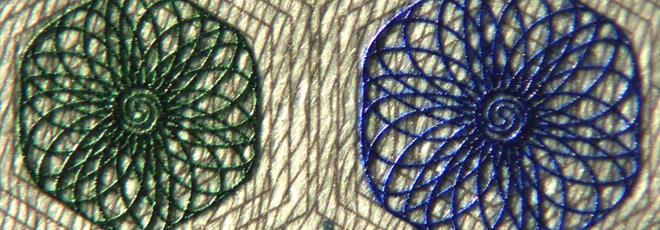INTAGLIO PRINTING, EXPLANATION BY DNS-IRAN.com
The following is a simple introduction to intaglio processing system.


The term intaglio means “to carve, to cut out, to incise” and covers a host of hand printing processes usually using metal plates (most often copper, zinc or steel).
The process is also referred to as Etching, even though purists will argue that the term should only refer to the processes that use acids.
- There are three basic steps in printing an intaglio plate:
- A soft ink is pushed into the lines and depressions of the plate and the surface is wiped clean, leaving ink . only in the recessed areas.
- The plate is placed on the bed of an etching press and the dampened paper is placed over the inked plate.
- Etching “blankets” are placed over both and the plate and paper are rolled through the press using.
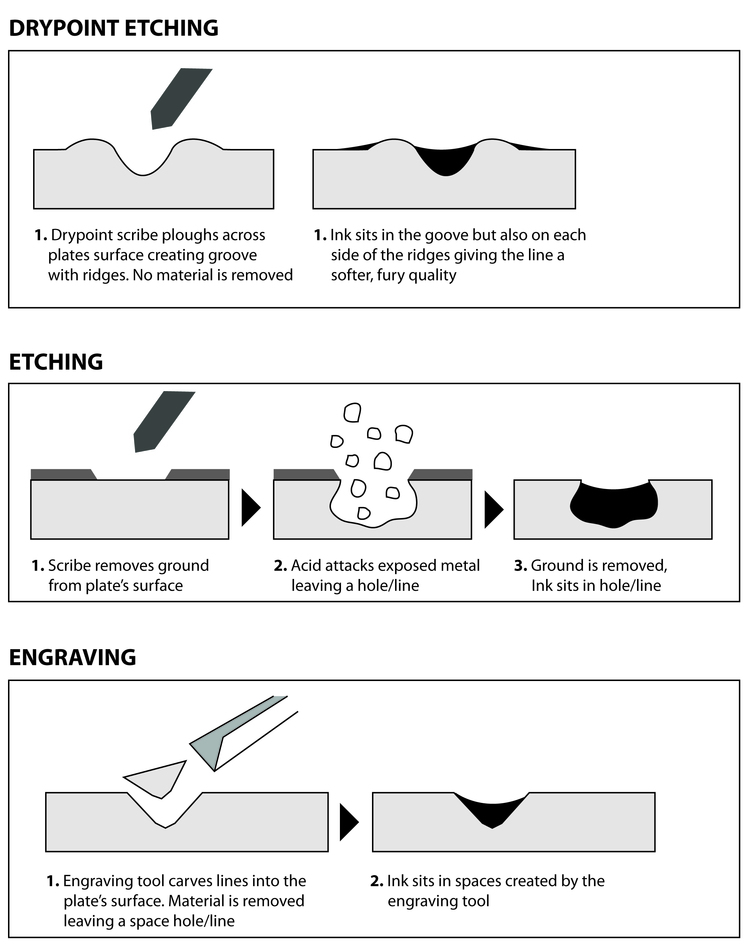
Printing the Edition:
When the plate work is completed and the paper and inks are chosen (through an interim process called Proofing) and the artist begins to print, this is called the edition. The edition consists of the numbered prints plus the artist’s proofs. The edition number is stated as a fraction with the total number of prints as the bottom number and the number of the specific print as the top number. Artist’s proofs are not counted as part of the edition, but it is not considered ethical for the number of artist’s proofs to exceed one-third the number of the edition.
There are two broad categories of intaglio processes/techniques:
1. Processes that use acid or mordant to bite into the plate (etching hard ground , aquatint, soft ground, lift ground are the most well-known). The longer the plate is bitten by the acid or mordant, the deeper the line or
tone will be.
2. Manual processes that use sharp tools to engrave, scratch or pit the plate (engraving, drypoint, among others).
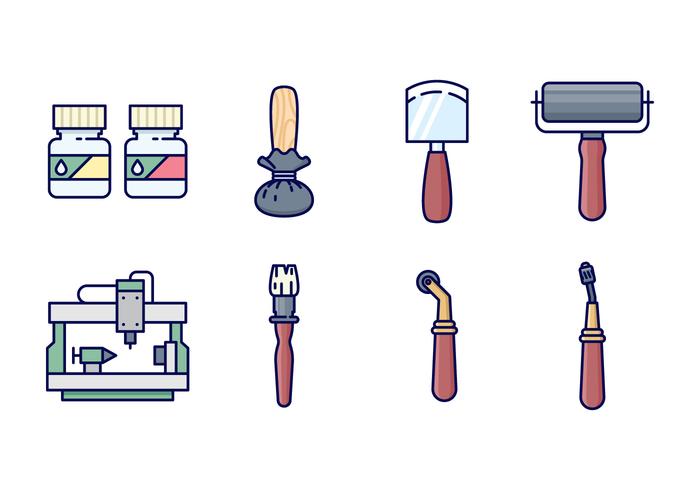
Processes/Techniques:
Hard ground etching : In the traditional etching method, the artist first covers the plate with a protective ground then scratches through the ground to create fine lines, and finally immerses the plate in a mordant, such as an acid or ferric chloride. The mordant eats into the metal wherever it is exposed, creating lines and marks that correspond to the lines drawn through the ground.
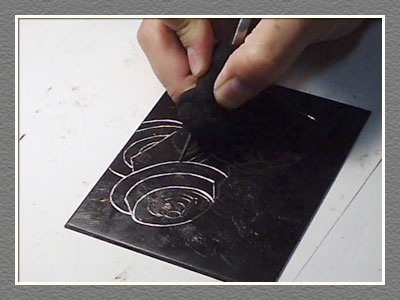
Soft ground etching: The process is similar to hard ground, but the ground used is softer or more sensitive and will lift off the plate at the touch of a finger or fabric. It is used to create pencil-like lines and to impress textures.
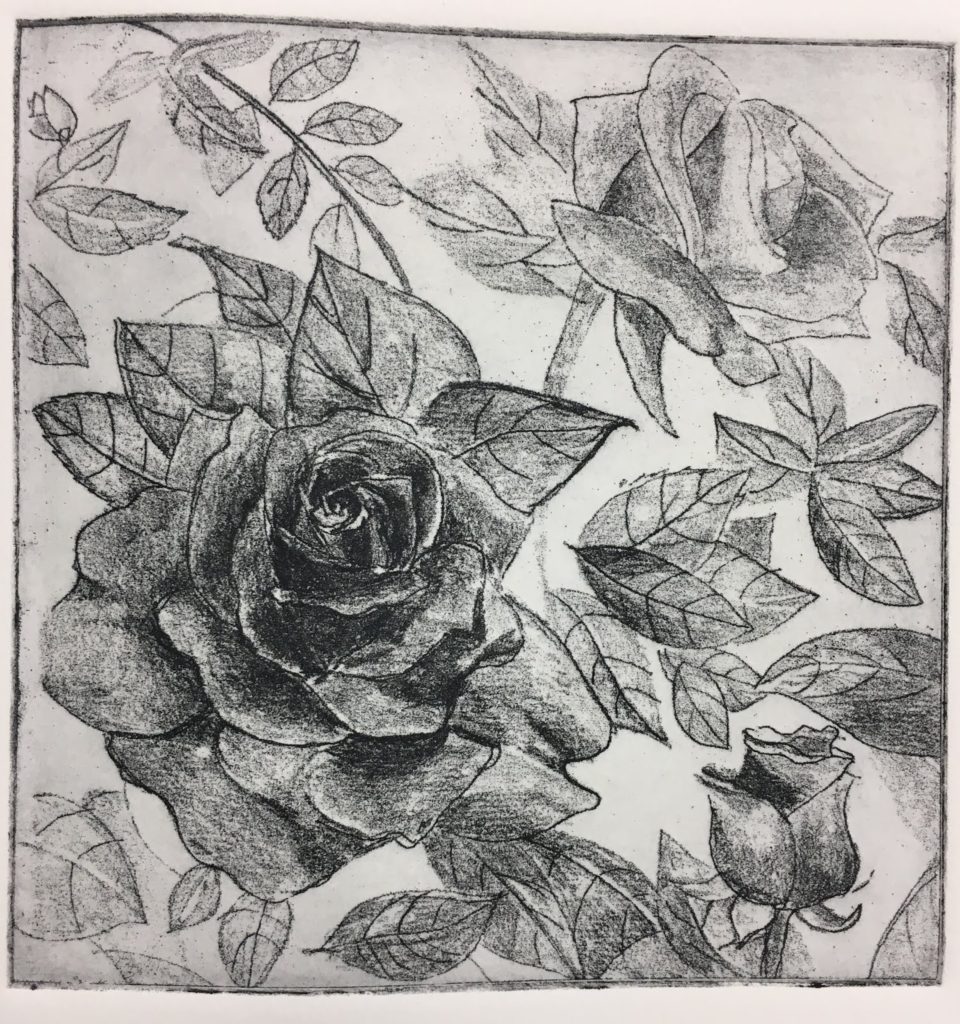
Aquatint: This technique also uses a mordant but it creates a tonal area. The artist covers the plate with a fine dusting of spray paint or a sprinkling of rosin dust melted onto the plate. When the plate is immersed in the mordant, the mordant bites around the paint or rosin particles, creating a tone instead of a line.
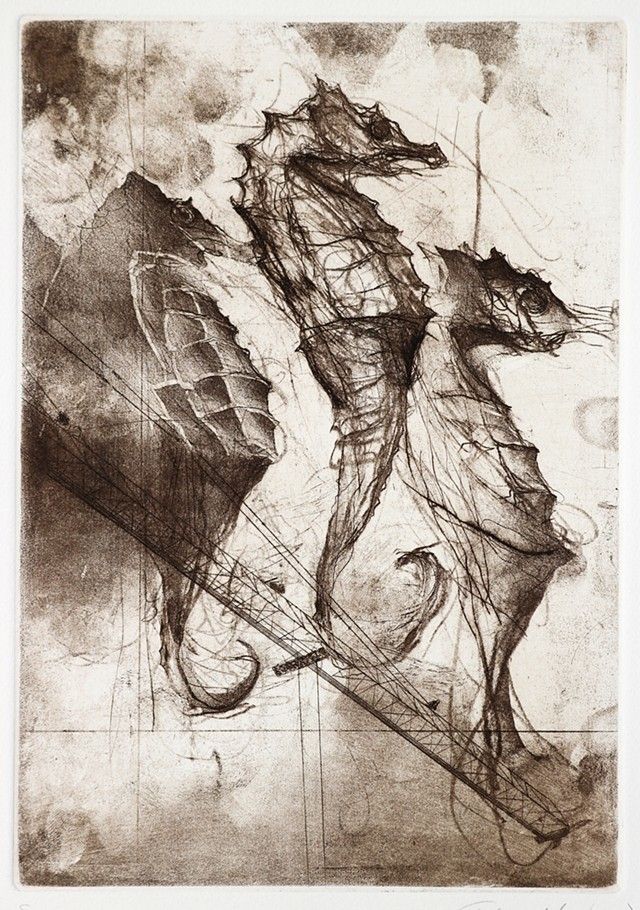
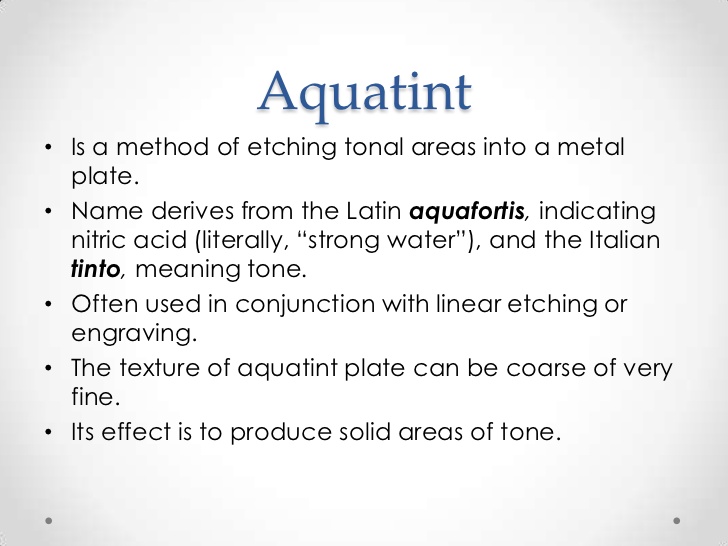
Drypoint: The artist draws directly into the plate, creating a shallow line with a ridge of metal or plexiglass on one side. This ridge, called the burr, is the metal or plexi that is displaced as the line is drawn (similar to the furrow of soil thrown up by a plow.) The ragged surface of the burr catches more ink than the shallow line beside it and the burr prints a velvety dark line which is the characteristic beauty of drypoint. But because the burr is fragile and wears away after only a few passes through the etching press, the number of prints in a drypoint edition is usually very small.
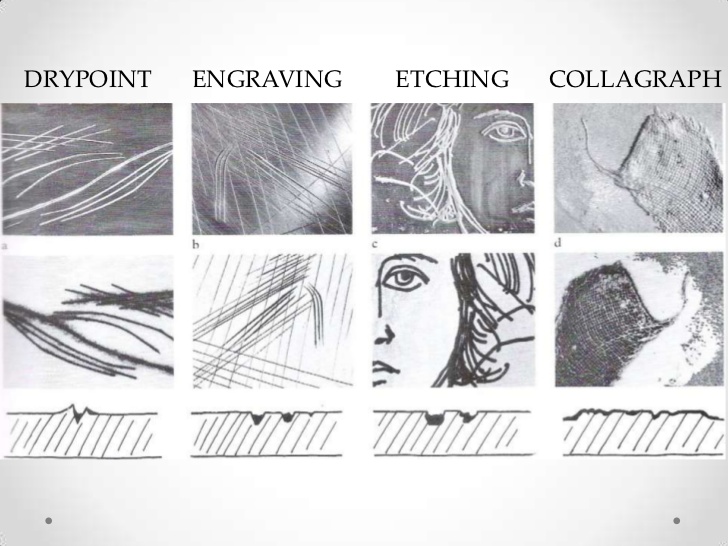
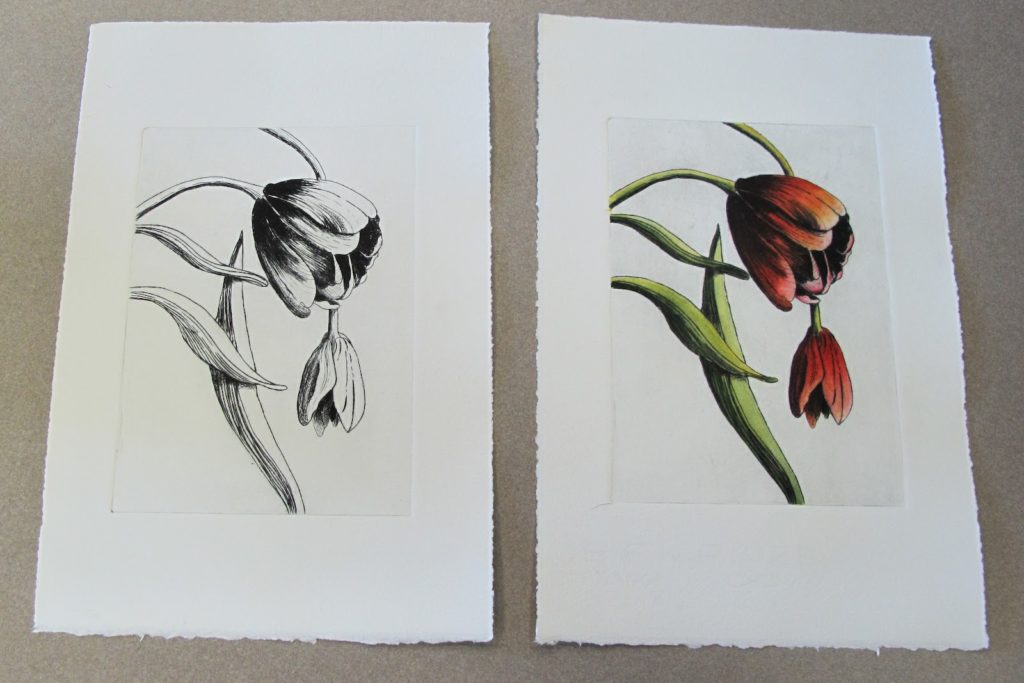
Mezzotint: The entire surface of the plate is covered with pits (the traditional method uses a tool called a rocker) but aquatint, softground and sandblasting are commonly used today. If a print were pulled at this point, it would be almost solid black. To create an image, the artist uses burnishers and scrapers to smooth the rough metal down for areas that will not catch ink. In other words, the mezzotint artist is creating a white image on a dark ground.
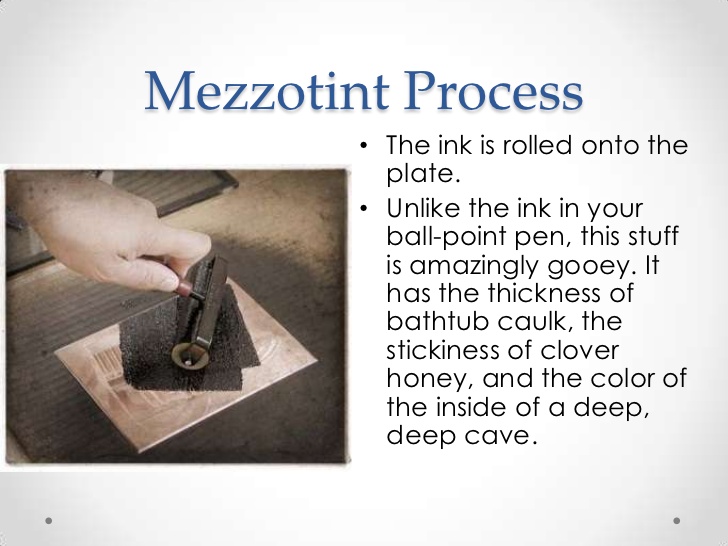

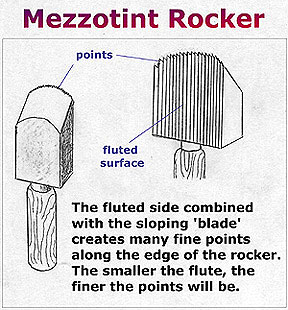

Engraving: The artist uses a tool called a burin to remove lines of metal from the plate. The line created by the burin is the most clear and clean of the intaglio lines.

Chine Colle: Lightweight paper is cut or torn into desired shapes, glue is applied and then placed on the inked plate, glue side up, on the press bed. The full sheet of printing paper is placed over this and run through the
press. The smaller pieces of paper adhere to the larger sheet with the inked image over both.
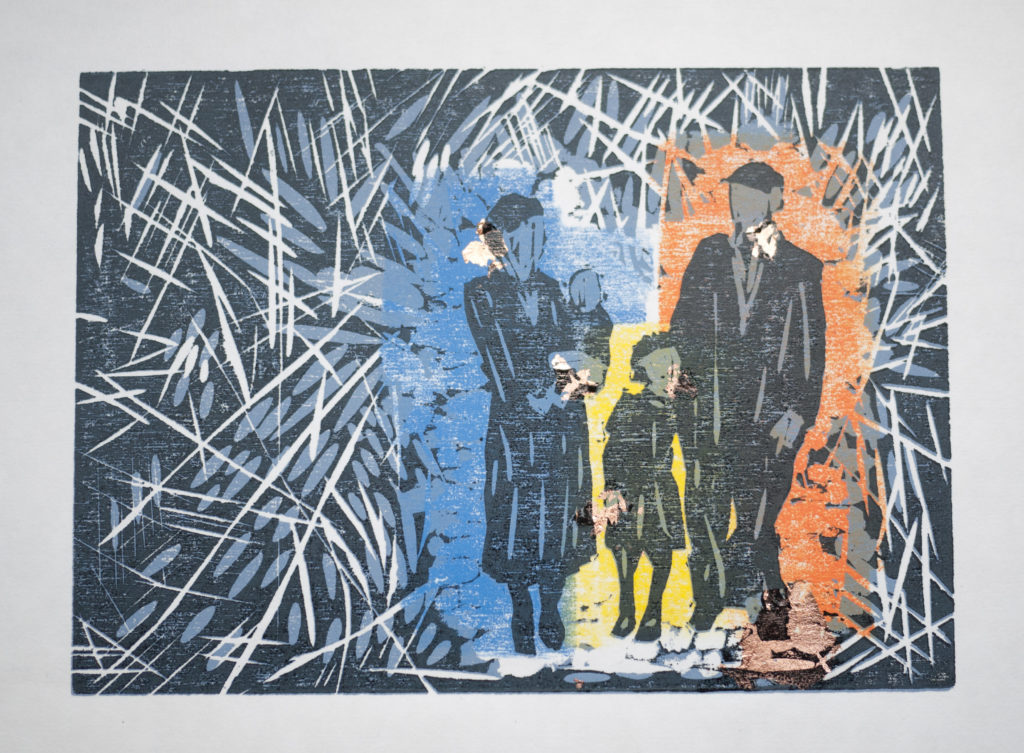
Color intaglio prints are usually created with multiple plates, in much the same way as multiple blocks are used to create color woodcuts. A separate plate is used for each individual color or the plates are constructed to facilitate color mixing on the printed paper (i.e. yellow printed over blue gives you green). It is also possible to add color by hand (or, more accurately, by finger or small rags, called daubers) to selected areas of a plate before it is printed. This technique is called à la poupée.
